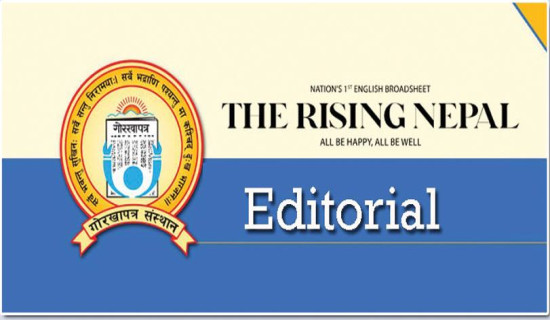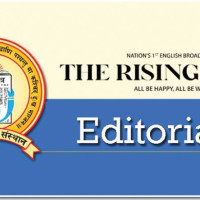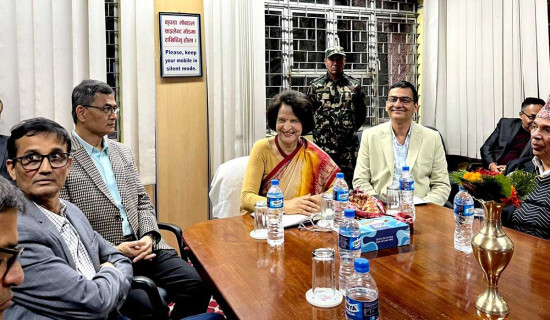- Tuesday, 2 December 2025
For Transparent Advertising
There is a popular Nepali proverb – bolne ko pitho pani bikchha, nabolne ko chamal pani bikdaina. Its meaning can be translated as: One who has good oratory and articulation for promotion can sell flour easily but one who remains silent, is unable to market even the first grade rice. This adage carries the essence of modern advertisement business that perhaps became popular with the evolution of industrial society. It serves as a bridge between the sellers and buyers of products. In an age of internet-driven mass media, advertisement forms an important instrument in promoting products, services and brand in the market. It informs, engages and attracts the public about something new so that it receives commercial value. An effective and creative advertisement not only draws consumers' attention but also wins their confidence, thereby having positive impact on the business. However, such an advertisement practice must be ethical and should not harm the public good.
Newspapers, radios, televisions, digital news portals and social networking sites largely rely on advertisements to sustain, operate and grow. In Nepal, the size of traditional media advertising stands at about Rs. 14 billion. However, the Advertising Association of Nepal (AAN) estimates the advertisement market of mass media at about Rs. 7 billion that is expected to increase by approximately Rs. 2 billion to make the total size to Rs. 9 billion. Likewise, the market size of outdoor advertising is around Rs. 18 billion but the country raises only Rs. 2.5 billion from it. The outdoor advertising is also called out-of-home advertising that clients learn when they go outside their homes. It is displayed in public or private places through billboards, buses, taxies, furniture and signage.
The ongoing economic downturns have affected advertisement business. Some advertising companies have insisted that the court verdict to ban advertising liquor items in mass media drastically reduced their income. However, the implementation of clean feed policy in 2020 impelled the multinational companies to generate advertisement locally. This has benefitted Nepali advertisement agencies. But the glaring problem besetting Nepali advertisement companies is their disregard for ethical business practice. Advertising agencies are taking hefty commissions by cheating the client companies and media outlets. They do not pay the exact amounts to the media outlets. The local governments that oversee the hoarding boards are receiving lesser revenues from them and contactors and a handful of related staff are extracting hefty income from them.
In order to regulate advertising industry, the Advertisement Board (AB) has issued standards for the public welfare advertisement in print and electronic media, advertisement agency listing and monitoring, and advertisement broadcast testing. The Board has asked the government offices and the agencies to make payments on the basis of an invoice. The agencies are required to issue their invoice mentioning commission involved. Similarly, it is effortful to enforce the code of conduct for the industry to make it more transparent and business-friendly. The agencies that violate the code are subject to a fine up to Rs. 500,000. The media houses should work with only listed agencies. It is necessary to secure permission of local and federal governments for the outdoor advertising and revenues generated from it should be shared at 60:40 ratio between them as per the existing law. With the growth of ethics-based advertising, not only the media and agencies themselves thrive but also the national economy receives a boost.

















